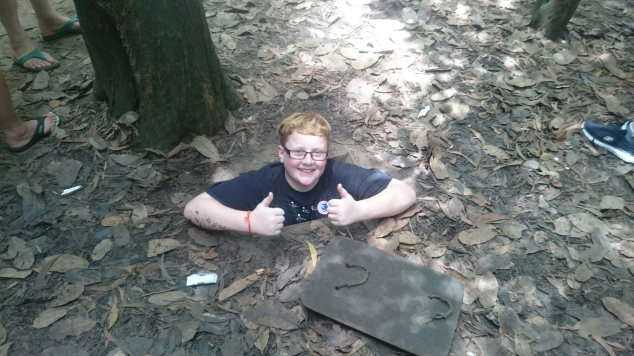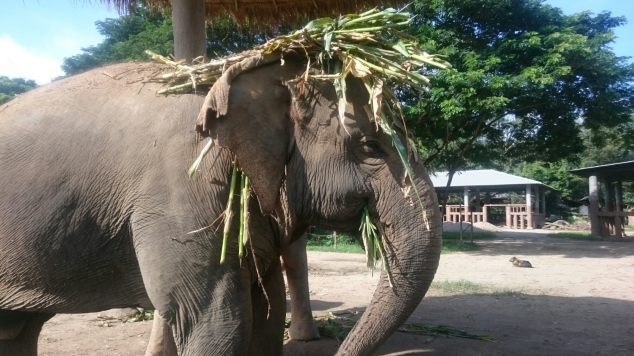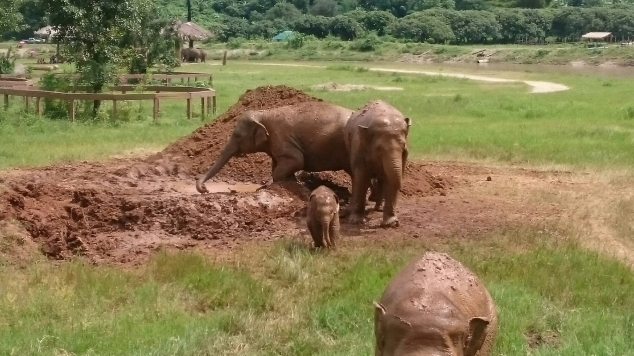We’ve been choosing (mostly) to visit countries with a visa waiver programme in place with the UK, in order to avoid additional expense. Earlier in our round-the-world adventure, we thought we were going to miss out on visiting Vietnam due to changes in visa requirements for UK citizens, but a reinstatement of the UK-Vietnam free 15-day tourist visa meant that Vietnam went back onto our list of countries to visit, at just around the time that we were finalising the last of our travel plans.
From advance reading on government and embassy websites, it was clear that we needed to fly into Vietnam to take advantage of the free 15-day tourist visa. This was something of a disappointment, as we had hoped to cross overland from Cambodia into Vietnam. But no big disaster; flights were duly booked when we did the “last big spend” in August in Thailand.
[Note to any potential UK citizen travellers reading this: (1) It’s really easy to get a Vietnamese visa when you’re in Cambodia – much easier than doing it back home (unless you live in London), so overland crossings between Cambodia and Vietnam (or by boat on the Mekong from Phnom Penh to HCMC) are straightforward. But you do need a “non-free” visa. (2) You can also apply for a longer visa when you arrive at international airports in Vietnam, prior to passport control – if you can get an airline to let you board in whatever your country of departure is! Just remember to bring a couple of passport photos, and cash to pay for the visa.]
We flew from Sihanoukville into Ho Chi Minh City (HCMC), as it’s been know as officially since 1975, or Saigon, as it’s still referred to by the locals. We had booked into a hostel in Saigon for the first week, with no fixed plans for that week or the next. The only activities we knew we wanted to do were a cruise on the Mekong Delta and a to see the Cu Chi tunnels. We were flying out of HCMC again after two weeks, so had no intention of venturing further north in Vietnam (this time).
After a short flight with Angkor Air on their new direct route between Sihanoukville (surely the smallest international airport ever!) and HCMC, we were here. Visas and onward transport were thankfully super-straightforward. (We took a taxi – there is an airport bus, but for four of us it was just as cheap in a taxi. And the visa process in HCMC was eased considerably by the airport attendant who let me print out our onward flight details at Sihanoukville airport after I forget to save copies onto my phone – what a star!!)
By the time we arrived in HCMC, Alex was exhausted (as evidenced by increasing grumpiness!!). It soon became apparent that he was suffering from a viral infection – swollen lymph glands, sore joints and muscles, blinding headache, fatigue, loss of appetite. We suspect – given how much the mozzies were munching on him in Sihanoukville – that he had picked up some mosquito-transmitted tropical disease. Dengue, perhaps? It certainly wasn’t airborne, as none of the rest of us came down with it, despite being in a family room. It took around 10 days before he was mobile again, which meant that (a) we spent all our time in Vietnam in HCMC and (b) we didn’t do too much “guidebook stuff”!
What did we do? Well the boys and I did manage a day trip on a bit of the Mekong Delta, did a fair bit of wandering (and learned how to navigate HCMC traffic!), and went to see a water puppet show; and the four of us made it to the Cu Chi tunnels!!! I drank lots of Vietnamese coffee (yum!!), had a trip to the Museum of Fine Art, and bought some Vietnamese silk. And then some more. And then more again… 😂 And I completed a few more pieces for the travel blanket.
Museum of Fine Art
This museum is housed within an old French colonial building, and was a short walk from our hostel. I took myself off their one afternoon, and had an interesting wander through lots of war art, some modern art, and historical ceramics.


 Aside from the artworks, I was ever-so-slightly distracted by the array of beautiful floor tiles…
Aside from the artworks, I was ever-so-slightly distracted by the array of beautiful floor tiles…

Mekong Delta day trip
The boys and I took a day tour to the Mekong Delta, arranged through our hostel. We were picked up at 8am for a two hour minivan trip south from HCMC, by way of some big Buddhas, before boarding a passenger boat for a shirt trip around some of the islands, named after the four sacred animals – Dragon, Unicorn, Tortoise and Phoenix.

The boats on the Mekong are structurally really similar to those we saw in Cambodia, but are all decorated with one intriguing detail – “eyes” looking down into the water. We were told the eyes were there to scare off river monsters (there are river monsters?!?) but there are a few other reasons they might be there too. Whatever the reason, they’re a fantastic sight! (Did you see what I did there…?? 😂)

On the islands, we saw how coconut sweets are made, heard some traditional Vietnamese music, and had a short trip in a pony and trap. And then, the highlight of the day – paddling along a section of water in a wooden canoe. I could have done this all day!!

We finished off with lunch, where we tried a local delicacy – elephant ear fish. It tastes similar to sea bass, and isn’t nearly as “muddy” tasting as the colour of the Mekong’s water would suggest!

Overall, it was fun day out, but I think a longer trip is needed to really appreciate the amazing eco-system of the Mekong Delta. (That journey from Phnom Penh to HCMC by boat would have been perfect…).
Water puppet show
Connor came across the water puppet show when looking for something fun to do for kids in HCMC. It’s an award-winning show that recreates Vietnamese myths and village scenes of old, with live narration (in Vietnamese) and music. The show lasted around 40 minutes, with separate stories like, “the King visits the village”, “boat race” and “unicorns playing with a ball”. We saw old men in boats smoking opium pipes, fire-breathing dragons, ladies dancing in unison and synchronised fish swimming! We were amazed by the technical skill of the puppeteers and the detail of the puppets. Even though we didn’t get all the jokes made by the narrator, we were still able to understand what was happening in each story.
Cu Chi tunnels
Another trip arranged via our hostel, to the Cu Chi tunnels, which were used by the local population to hide out (and live in) during the French colonial and American Wars. The visit was largely limited to overground – the tunnels themselves are too small for most Western bodies!! Plus, there were lots of rather vicious booby traps set throughout them… There was one section that has been enlarged for visitors to go through, but even that was claustrophobic and we only made it along the first 20 metres before escaping. The visit was interesting, though we were surprised by the very strong anti-American bias in interpretation of events – if we hadn’t asked, we would have been left thinking that the tunnels were built specifically for the “American War”, when they were actually in use long before then.


Rules of the road
This was perhaps the biggest culture shock for us – crossing roads. It’s something that everyone who visits here talks about. There’s just one way to do: step out into a flow of traffic and keep walking. Everything that we taught the boys (and we’re ourselves taught) was thrown out of the window! There’s rarely a clear run across busy roads, and drivers won’t stop for pedestrians who are waiting patiently at the side of the road.
The boys took to this like ducks to water – I think teenagers love the power of stepping out into oncoming traffic and have the traffic stop or slow and weave around you! And that belief in their own immortality helps… We had to keep reminding them not to do this when we get back home!!! Us adults were a little more wary – years of conditioning, I suspect.
Oh, and scooters are not just for the road – riders regularly drive down pavements to bypass traffic jams, becoming yet one more obstacle for pedestrians to dodge as they walk…
Driving and walking take on something of an artform at roundabouts, where pedestrians, bikes, scooters, cars, vans and buses weave in and out among each other. If they only gave out coloured smoke trails like the Red Arrows, it would be beautiful 😀.

Vietnam is definitely on the list of places to go back to – I’d love to do a cycling tour here, north to south, and see much more of the country. Next time…
Next stop: Chiang Mai, Thailand












































































